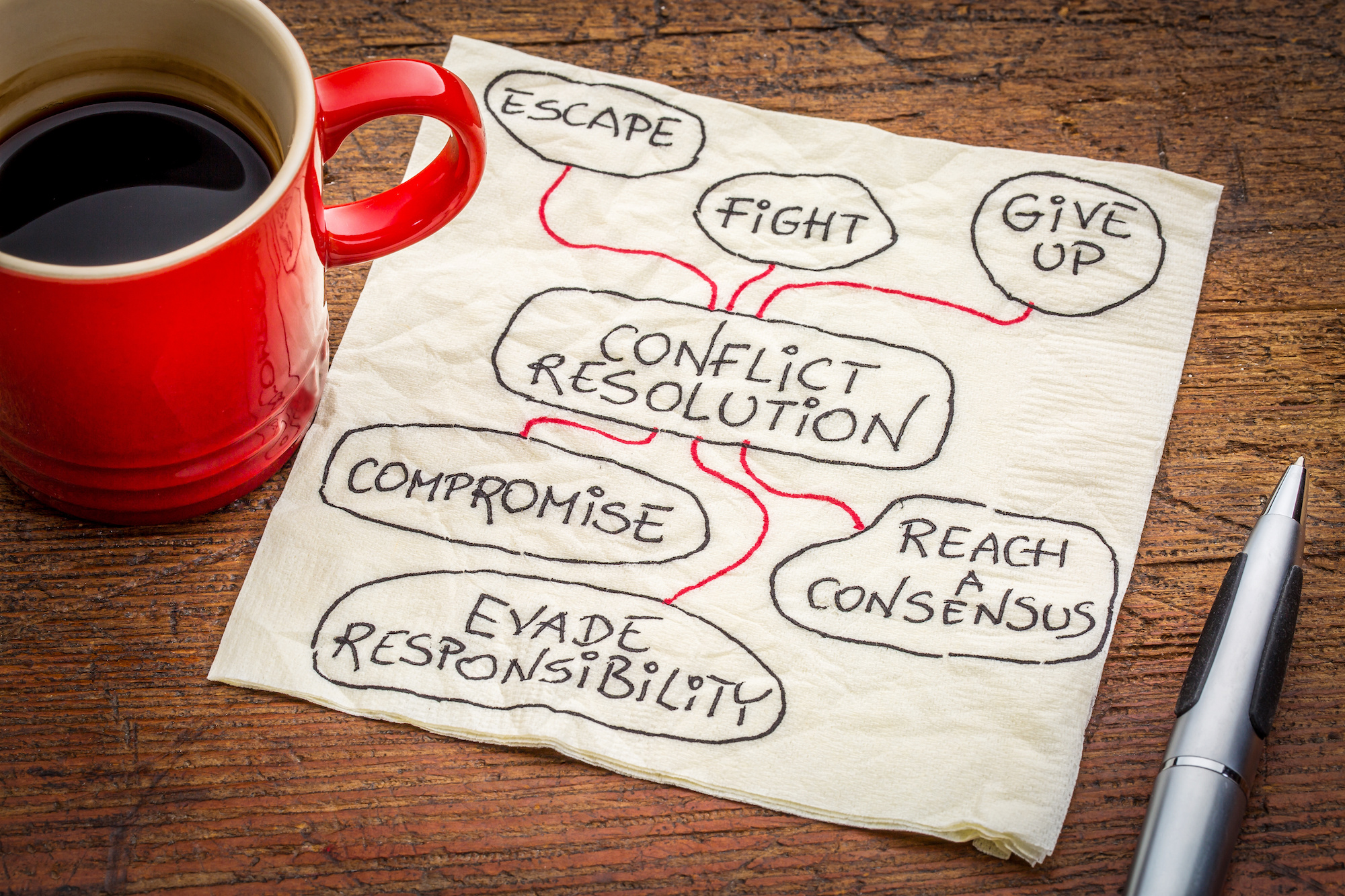How conflict resolution skills benefit all relationships
No matter how much you like your roommates or coworkers, conflicts arise when your lives are intertwined—especially if you spend a lot of time together. No one is perfect, and everyone has different pet peeves. Maybe you can’t stand that your roommate doesn’t do his dishes right away, while he hates that you leave your shoes in front of the door when you get home.
Without emotional intelligence and good problem solving skills, these minor issues have the potential to make people feel powerless, angry, and resentful, none of which create a healthy coliving environment. That’s why cultivating effective conflict resolution tools and interpersonal skills is essential for living with roommates (as well as a host of other real-life situations in which being able to find a solution quickly and efficiently will benefit you).
Conflict resolution is the process of finding a peaceful solution to a disagreement or dispute. This might sound intimidating or negative, but conflict resolution is often very mundane—it might even happen without you realizing it. Think: Negotiating a path forward on a project at work when you and a coworker have different approaches or points of view. Or, deciding who will take out the trash when everyone thinks it’s someone else’s turn.
If you’re working on your conflict resolution skills, give yourself this assignment: Spend one day counting the number of times you engage in some sort of conflict. Although we as a society give the word “conflict” a negative connotation, you’ll have an easier time approaching it when you see how benign it can be.

Table of contents
How to resolve conflict in 4 steps1. Get to the root of the issue2. Choose an approach3. Put yourself in the other person’s shoes4. Address the conflictHow to resolve conflict in 4 steps
These four simple steps will help you handle conflict gracefully and effectively.
1. Get to the root of the issue
Exploring the source of the conflict is a good place to start: Are you stressed at work and policing dishes to regain a sense of control? Or, conversely, are you being too accommodating and forgetting to stand up for your own needs? Take some dedicated time to journal, process your feelings with a friend, or get some exercise and cool off.
If you’re caught off-guard by a confrontation, take a moment to breathe and remain calm.
2. Choose an approach
The Thomas-Killman method outlines five different ways most people approach conflict situations, all of which exist on a spectrum between asserting oneself and cooperating with others. According to this method, possible methods for resolving the conflict include:
Avoiding. Just like it sounds, avoiding the conflict means ignoring it and hoping it will go away or fix itself.
Accommodating. This strategy involves ignoring one’s own needs in order to satisfy the other party.
Compromising. A compromise usually works to satisfy everyone a little bit, and no one fully.
Competing. The opposite of accommodating, this strategy involves putting one’s own needs before others’.
Collaborating. This describes that rare instance when it’s possible to reach an agreement that satisfies everyone.
Often, our instinctual conflict resolution strategies aren’t necessarily the best strategies for the situation at hand. For example, if your roommate is constantly eating your food and not offering to replenish it, your instinct to avoid dealing with the conflict is unlikely to help in the long term. You may need to take a more assertive approach to ensure your voice is heard. No conflict resolution style is bad or wrong—some are just more appropriate for different types of conflict than others.

3. Put yourself in the other person’s shoes
Once you’ve taken a beat to understand your own position and given some thought to the best approach, make sure you connect with the other person and practice empathy. Though it may feel like a competition, conflict resolution is also teamwork. You wouldn’t be trying to resolve an issue with this person if they weren’t important to your life on some level. So remember that they are, above all, another human with feelings, needs, desires, and something to offer you beyond a tangible solution.
One important way to signal to the other person that you’re invested in them in to be an active listener. Give the other person time to speak and make sure they feel genuinely heard. Here are four ways to show someone that they have your full attention.
Keep your body language open and inviting.
Make eye contact.
Recap what they’ve said periodically to both ensure you understand and let them know you’re absorbing the information.
Nod and interject affirmative phrases as they speak.
4. Address the conflict
When it’s time to actually address the conflict, remind yourself of the five basics of conflict management:
Use “I” statements when expressing yourself.
Avoid making accusations.
Try to see the issue from the other person’s point of view. (That’s empathy!)
Remember that this issue is temporary, and believe that it will be resolved.
Keep your body language open and neutral; avoid crossing your arms, turning away from the other person, or hunching over.
There is no true neutral when it comes to emotions, but getting outside your ego’s story about the situation, or doing your best to remain neutral and calm, can help you navigate a conversation with the parties involved.
It’s important to view conflicts as learning opportunities and progress toward more harmonious living rather than scary fights. With good problem solving skills, everyday issues can be seamlessly navigated rather than feared. Practice these effective conflict resolution tools with your roommates, coworkers, partners, friends, and family members, and soon you’ll be a pro at handling conflict.
Bungalow housing is made for roommates. We handpick homes that are move-in ready and perfect for shared living, and with roommate vetting and compatibility matching, we help you find people you actually want to live with. Find your Bungalow.
Ready to find your next home?
Move-in ready homes and a built-in community so you can feel at home, together — wherever you are.
Suggested articles



